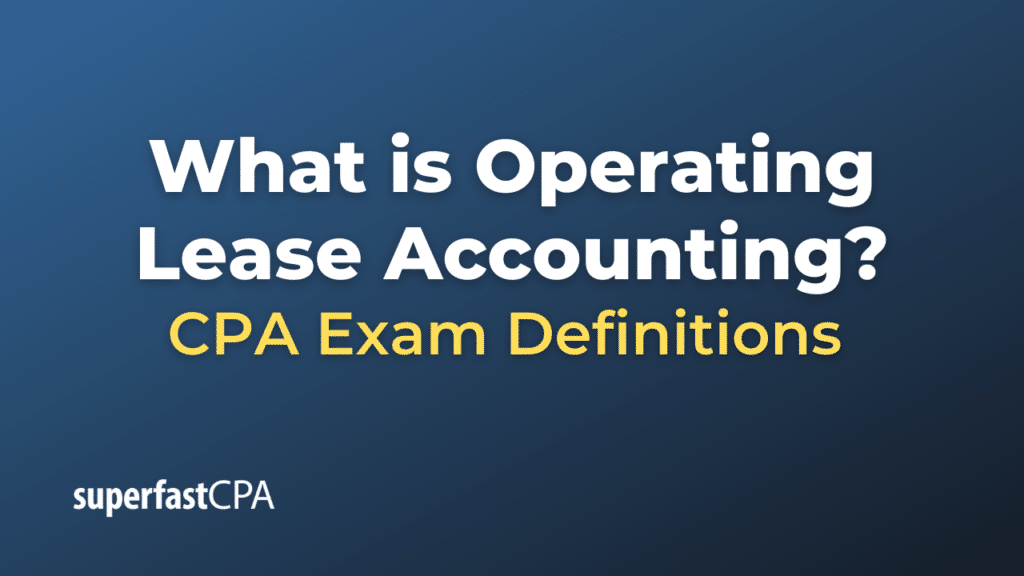Operating Lease Accounting
Operating Lease Accounting refers to the method of accounting for leases where the lessee does not take on the risks and rewards of ownership of the leased asset.
Traditionally, under the old accounting rules (prior to ASC 842 and IFRS 16), operating leases were considered “off-balance sheet” financing. The lessee would simply record the lease payments as an operating expense on the income statement over the lease term. The leased asset and corresponding liability were not reported on the balance sheet.
However, new lease accounting standards were introduced by the Financial Accounting Standards Board (FASB) in the United States (ASC 842) and the International Accounting Standards Board (IASB) internationally (IFRS 16). The new standards, which took effect in 2019 for public companies and are being phased in for private companies and other entities, require lessees to recognize most leases, including operating leases, on their balance sheets.
Under the new rules, for each operating lease, a lessee recognizes a right-of-use (ROU) asset and a lease liability on the balance sheet. The lease liability is initially measured at the present value of the lease payments. The ROU asset is initially measured at the same amount as the lease liability, adjusted for any lease prepayments, lease incentives received, and the lessee’s initial direct costs.
On the income statement, the lessee will record a single lease cost, calculated so that the cost of the lease is allocated over the lease term, generally on a straight-line basis. The lessee also recognizes a depreciation expense on the ROU asset.
On the cash flow statement, the part of the lease payment representing repayment of the lease liability reduces financing activities cash outflows, and the part of the lease payment representing interest on the lease liability is an operating activity. The total lease cost will typically decrease over the lease term, resulting in an increasing amount of cash outflows from operating activities over time.
These changes were implemented to provide more transparency about a company’s lease obligations, as the old rules allowed for significant liabilities to be kept off a company’s balance sheet.
Example of Operating Lease Accounting
Let’s use an example to illustrate how operating lease accounting works under the new rules.
Suppose a company, ABC Corp., signs a five-year lease for office space, with annual lease payments of $100,000 due at the beginning of each year. The present value of the lease payments, using a discount rate of 5%, is $432,947.
Here’s how ABC Corp. would account for this operating lease:
- Balance Sheet: At the commencement of the lease, ABC Corp. would recognize a right-of-use (ROU) asset and a lease liability of $432,947 each. This represents ABC Corp.’s right to use the office space for five years and its obligation to make lease payments.
- Income Statement: Each year, ABC Corp. would recognize a portion of the total $500,000 in lease payments as lease expense. This is typically done on a straight-line basis, so it would record $100,000 ($500,000 / 5 years) in lease expense each year. It would also record a depreciation expense for the ROU asset, also typically done on a straight-line basis, so it would record $86,589 ($432,947 / 5 years) in depreciation expense each year.
- Cash Flow Statement: The lease payments would be split between principal and interest. The principal portion reduces the lease liability and is a financing outflow, while the interest portion is an operating outflow. Over the term of the lease, the total cash outflow equals the total lease payments of $500,000.
By the end of the lease term, the ROU asset and lease liability on the balance sheet would be fully depreciated and paid down, respectively.
This is a simplified example and assumes no changes in the lease over its term. In practice, lease accounting can be quite complex due to lease modifications, reassessments, variable lease payments, and other factors.













